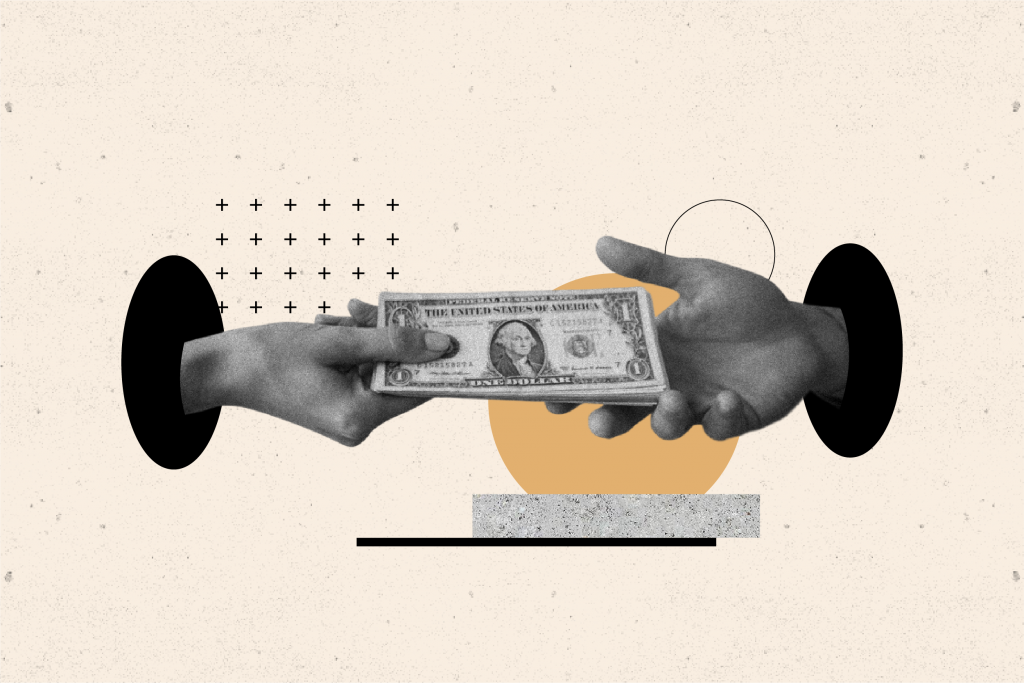Most of us encounter content marketing all the time, every day—even if you don’t know it when you see it. In fact, this article you’re now reading is content marketing. That’s right, content marketing about content marketing. So meta!
Anyway, people talk about content marketing as a form of brand awareness that’s become unavoidable in the digital space and that’s at least partially true. But how does it work, and what do you need to know about it to do it right?
What is Content Marketing?
Content marketing is a system of creating relevant, consistent content so that a brand can reach a desired audience, distribute value, and build trust. The driving force behind any piece of content marketing is relevance and its ability to connect a user to a brand—and hopefully, include them as a possible lead they can email and market to later. But can the brand craft a message that reaches a broad audience and adds value without coming off like a sales pitch? It’s right there in the name—content marketing is a marketing effort, not a sales effort. It’s a thin line, but one that’s important to respect.
Before creating any content, a brand needs to determine what their end game is. Every potential audience member sits at a different place in the brand’s sales funnel, which is sales-speak for the journey that a prospective buyer takes before purchasing a given product or service. To optimize your content strategy, create stuff for the person that’s getting ready to buy tomorrow, as well as the person who hasn’t even heard of you yet. But more on this later.
No matter who you create content for, it’s absolutely vital to provide value with your content, which builds brand trust and keeps you top of mind with potential customers. But being relevant and useful isn’t enough. It must also not suck, because it’s also a reflection of your brand.
So now that we understand the basics of content marketing and why it exists, what types of content marketing exist?
Examples of Content Marketing
Well, we’re glad you asked. Here are six types of content marketing commonly created today.

Books (Digital and Physical)
Books—we’ve all read them. Sometimes on the Internet, sometimes the old-fashioned way. Just like your favorite authors, marketing teams also publish e-books, how-to guides, white papers, and annual reports. Books are quite easy to create, because it is easy to self-publish your content and make a digital copy available for mass consumption.
Videos
Videos are useful because they can be distributed cheaply and easily, across many different channels. According to studies conducted by the Content Marketing Institute and MarketingProfs, videos are the third-most popular example of content marketing in the B2B space. Videos can be expensive to produce, however, if you contract a third-party agency or invest in top-of-the-line equipment. More recently though, as smartphone videos have increased in quality and capability, they’ve brought down the cost of producing video.
Blogs and Content ‘Hubs’
Blogs are the easiest entry point for most brands, as nearly every brand has one. But not every brand has a good one. It’s a good strategy to focus on a specific topic and create content that pertains directly to that topic and provides real service. For example, if your brand solves a pain related to email marketing, then a content hub focused on email trends, copywriting, and best practices for email marketers would be most effective. These topics are hyper-relevant to your potential customers.
Podcasts
Podcasts disseminate the same valuable information that guides or articles do—only through your headphones instead of your screen. Use this opportunity to deliver content in a conversational format with guests, especially those that can provide insight from firsthand experience. After recording, transcribe the audio content and create a blog post around the conversation for twice the impact.
Infographics
Infographics contain statistics, charts, graphs, and other data that you’ve scraped as a thought leader in your space. The aim of an infographic is to convey information in an insightful and thought-provoking way—not just writing about the stats in a longform report.
Infographics are useful because they generally contain evergreen content—information that always remains relevant. If you plan to create an infographic and you don’t have a ton of design experience, it is best to have the piece professionally designed.
Experiential Content
As more brands master the above mediums, many are moving over to experiential content marketing to provide their users with more memorable brand experiences. Experiential content marketing brings together compelling visuals, explorability, and points of interaction to connect the viewer with the brand on the most intimate level.
Brands that utilize experiential content are often in a better position to connect with viewers over other forms of content purely because it can be so immersive and, as a result, much more memorable.
Oh, hey, what do you know? This is kind of (read: exactly) what we do here at Ceros. Hit us up if this sounds like the type of stuff you want to create.
Why is Content Marketing So Important?
Because audiences have learned to tune out traditional advertising. Have you ever sat through an entire pre-roll video on YouTube? Me neither.
Effective content answers questions and provides guidance while generating brand awareness in a way that doesn’t turn a potential customer off with sales-heavy messaging. As a result, more businesses are investing in creating more engaging, informative, entertaining, and useful content.
But above all, be sure to study your audience and understand what they need before you start your content creation process. The only thing worse than creating no content is pouring effort into making worthless or irrelevant content. Create an ideal customer profile so you can design your content to appeal to that kind of person. By the way, you’re still reading, so I guess this must be relevant to you.

How Does Content Marketing Drive Sales?
Of course, the most important aim of any business is to make a profit. A sound content marketing strategy can be a magnet that pulls people to your business as they begin their journey towards making a purchase. It leads people towards your brand, encourages the audience to consume more of this content regularly, and eventually guides towards a purchase.
As promised, let’s bring it back to the funnel. To drive awareness that leads to sales, you must create the right content for each stage of the customers’ buying journey.
Awareness Stage
This is the stage where people are asking questions—usually through Google or while perusing social media. Create content that guides them to your online property and answers their questions or delivers the advice they seek at this stage.
People use search engines billions of times a day to search for answers to problems. If your content is informative, engaging, and tackles your audience’s problem head-on, your audience is much more likely to find your content (and might be more likely to stick around on your site).
Consideration Stage
Once a user becomes aware of your brand, the next stage of their journey is about finding the right solution to their problem. Content marketing strategy can also vary from industry to industry, but generally speaking, the content here serves to drive a viewer down the sales funnel with more detailed, valuable information.
In a B2B situation, this stage may consist of white papers and case studies that are more explicit in positioning your product or service against your competitors. In this case, viewers might have reached a stage in the funnel where they are ready to buy, but need to know which product is best for their individual needs.
Decision Stage
Content marketing activities culminate with this final stage—a user should decide that your brand is trustworthy and can provide the right solution for their needs. In the decision stage, guide your audience over to the finish line.
It’s important to be firm about driving people to take action with subtle nudges, but try not to be overly aggressive in this stage. That behavior can very easily lead to them losing interest.
Content Marketing Works
While measuring the ROI of content marketing can be a challenge, it is an important marketing channel for most businesses in today’s world of consistent media consumption. Providing the right content in the right format to the right person at the right time can be extremely powerful for any business—yet even some of the largest companies today still struggle with building a cohesive content marketing strategy.
Whether you’re a designer or a marketer, your content marketing strategy should always start by answering the key questions that a prospective buyer might have about you or your industry. By tailoring the delivery of these answers in entertaining and versatile formats, attracting and keeping new customers will become an effective new channel for business success.



